El Tabernáculo (Éxodo 25-40)
The Tabernacle building and its furnishings.
Contributed by Rev. Yves Langevin (www.freebibleimages.org)
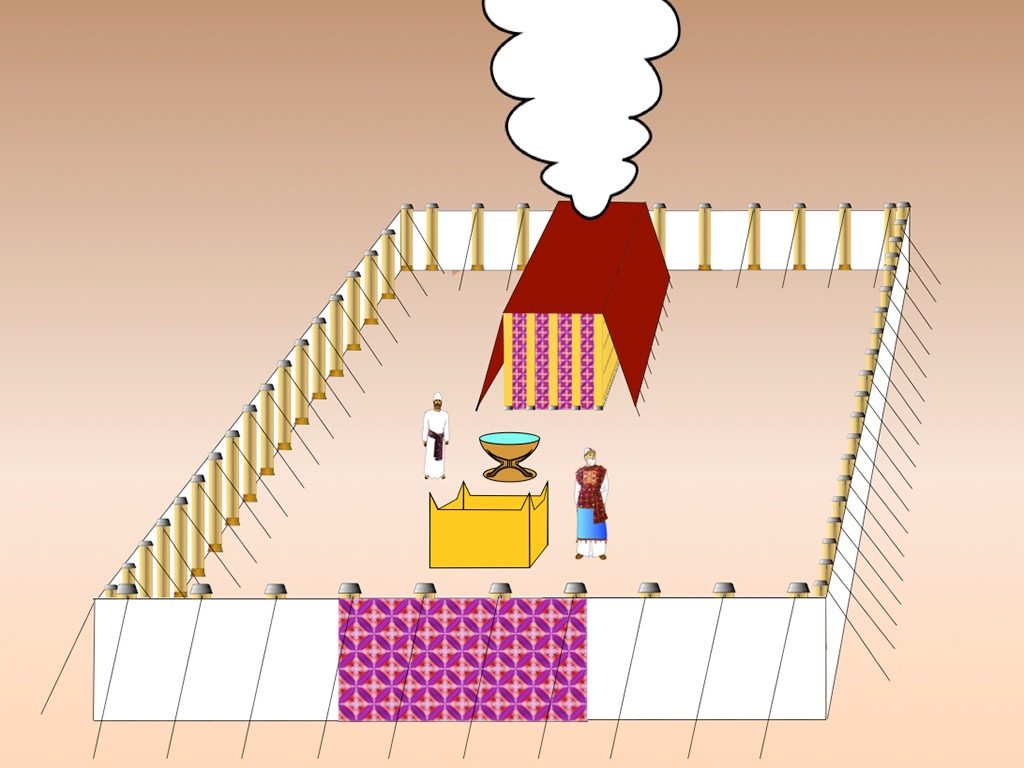
Dios le dio a Moisés las instrucciones para construir un Tabernáculo. Tabernáculo significa “tienda” o “santuario”. Era un lugar sagrado donde Dios se encontraba con su pueblo, los israelitas y donde venían a adorar y ofrecer sacrificios. Dios apareció como una columna de nubes sobre el tabernáculo durante el día y una columna de fuego durante la noche. – Figura 1
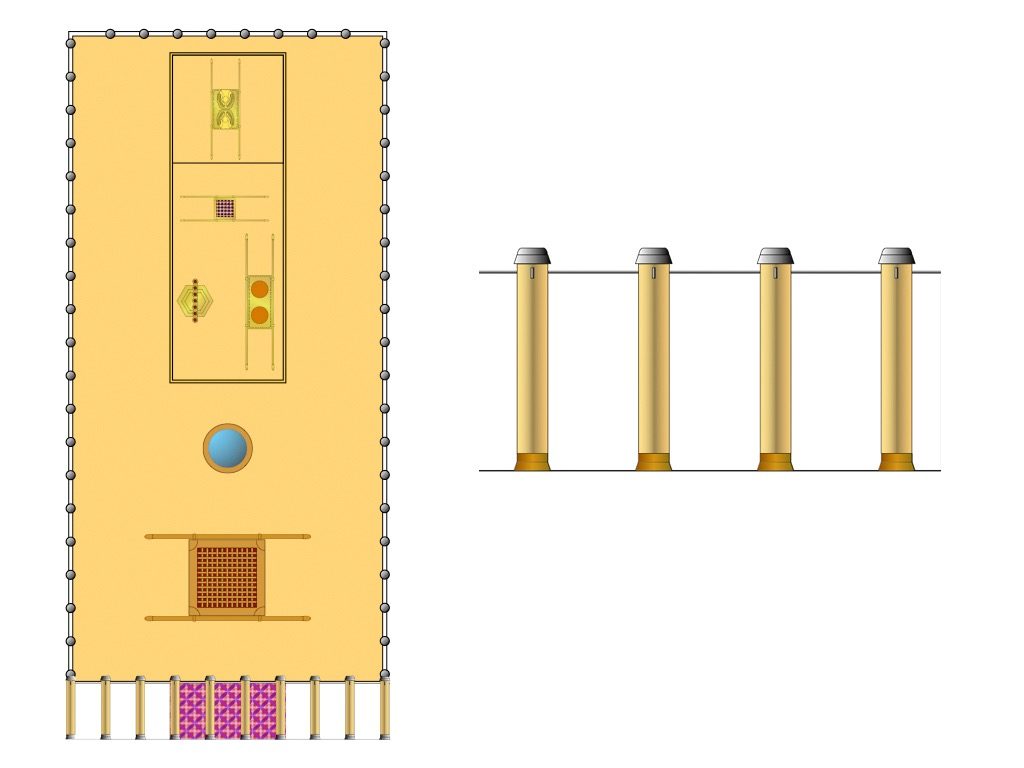
Todo el compuesto tenía 150 pies (46 m) de largo y 75 pies (23 m) de ancho. Estaba rodeado por una cerca de lino que tenía 7.5 pies (2.3 m) de altura con una sola entrada. Tenía sesenta pilares de bronce con ganchos de plata que sostenían el fino lino blanco trenzado. – Figura 2

La única entrada estaba en el lado este y tenía 30 pies (9.1 m) de ancho. Estaba bellamente hecha de lino tejido con hilo azul, púrpura y escarlata. – Figura 3

La cortina a través de la entrada estaba apoyada por cuatro pilares de bronce. – Figura 4
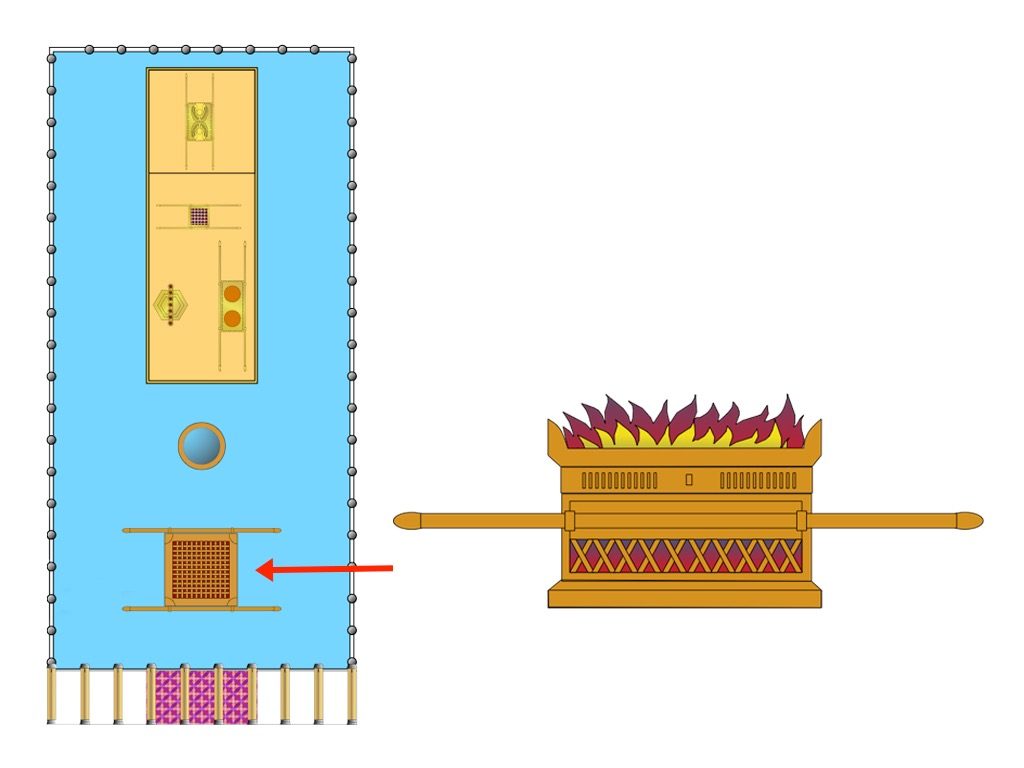
El altar de bronce para el sacrificio estaba situado dentro del patio. Estaba hecha de madera de acacia y revestida con bronce. – Figura 5
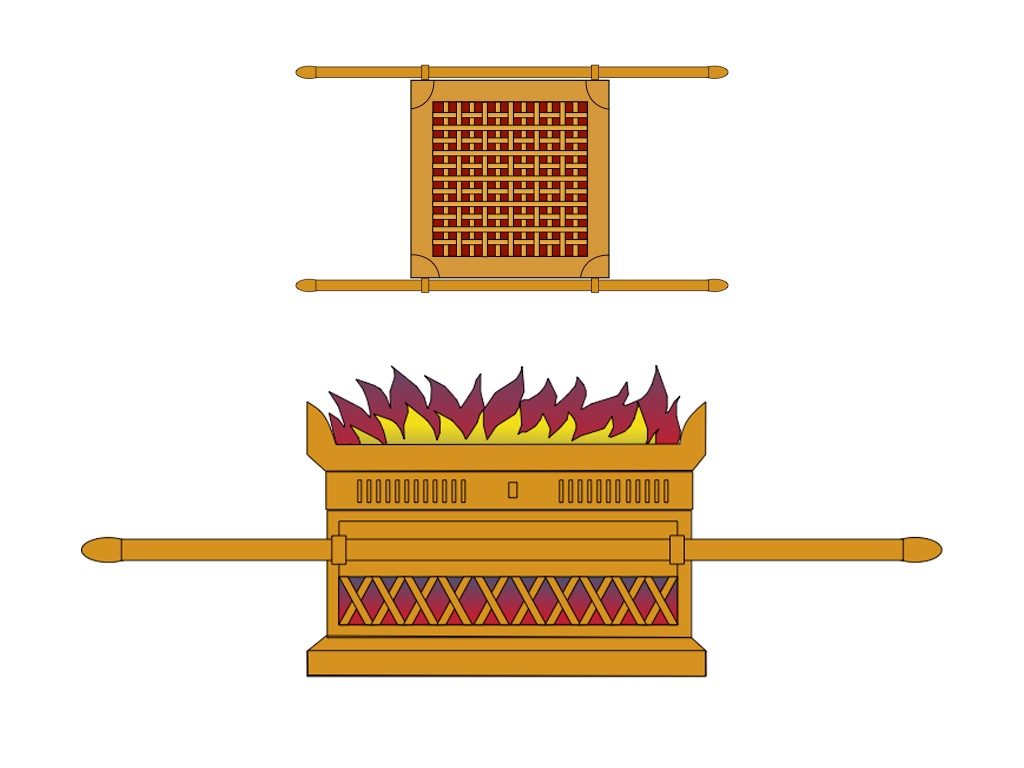
El altar era de 7.5 pies (3.3 m) cuadrados y 4.5 pies de alto (1.4 m). Cuatro cuernos proyectados desde las cuatro esquinas superiores y los animales que se sacrificaban se colocaron en una rejilla de bronce en el interior. Se llevó con largos postes de madera recubiertos de bronce. El altar de bronce ardía continuamente. – Figura 6
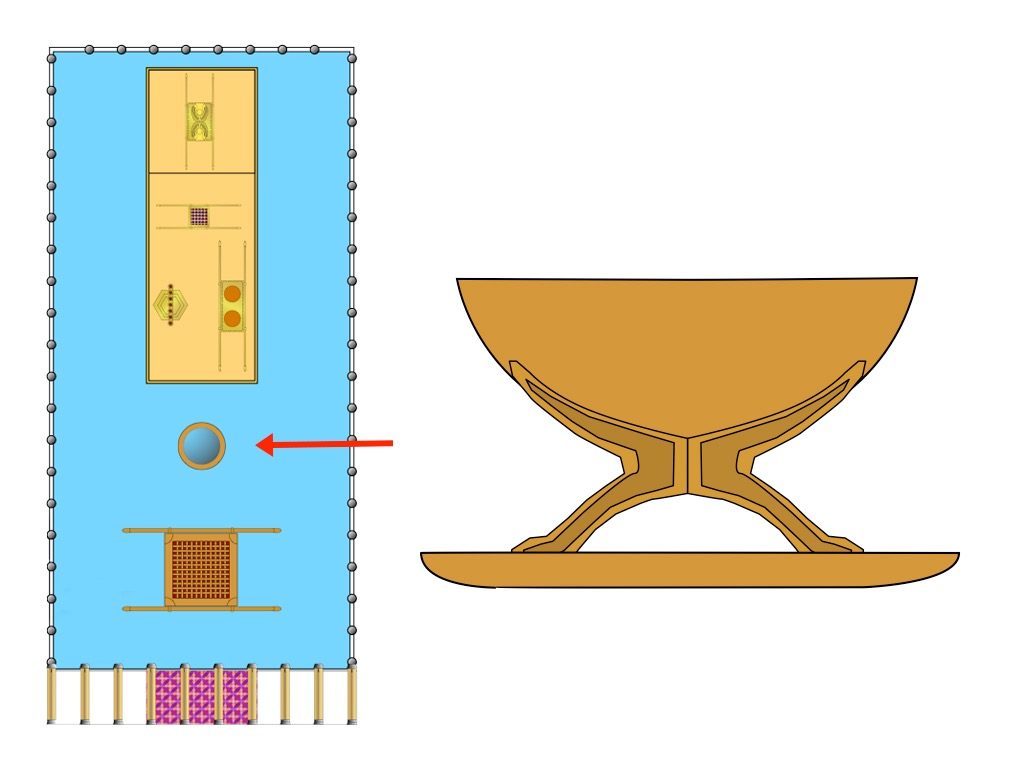
El lavamanos, o cuenca, era un gran cuenco lleno de agua ubicado a medio camino entre el utensillo y el Lugar Santo. – Figura 7
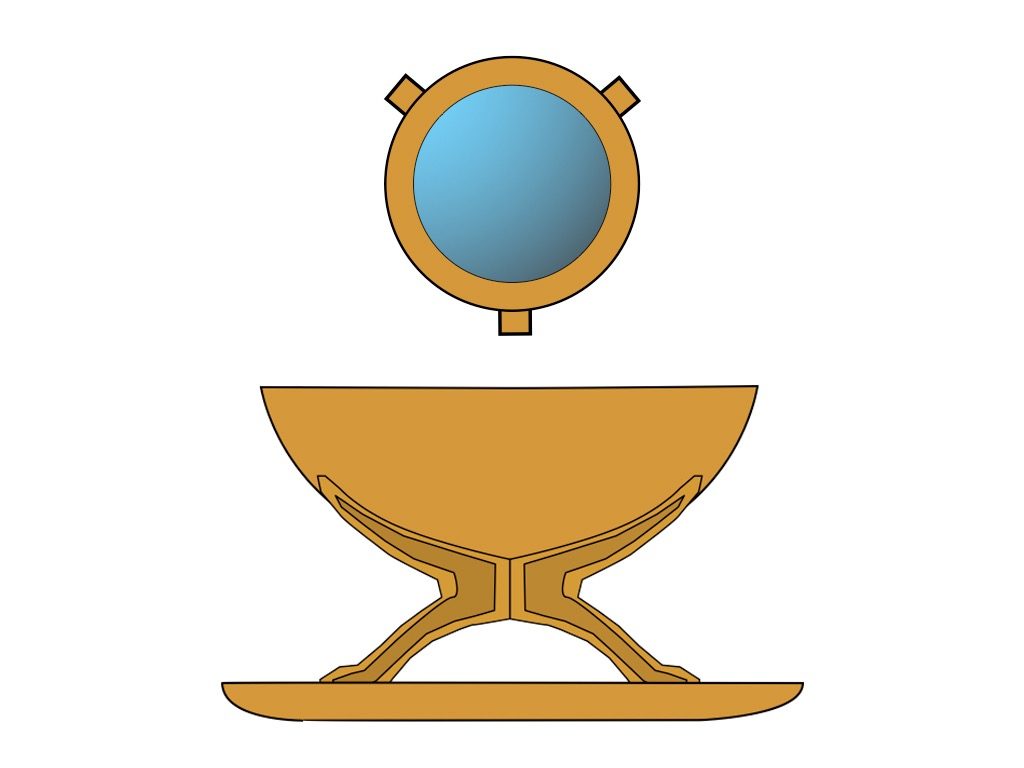
La fuente fue hecha enteramente de bronce. Los sacerdotes se lavaban las manos y los pies antes de entrar en el Lugar Santo. – Figura 8

El Tabernáculo en sí tenía cuatro cubiertas. La primera cubierta consistió en lino finamente retorcido, tejido con material azul, púrpura y escarlata. – Figura 9
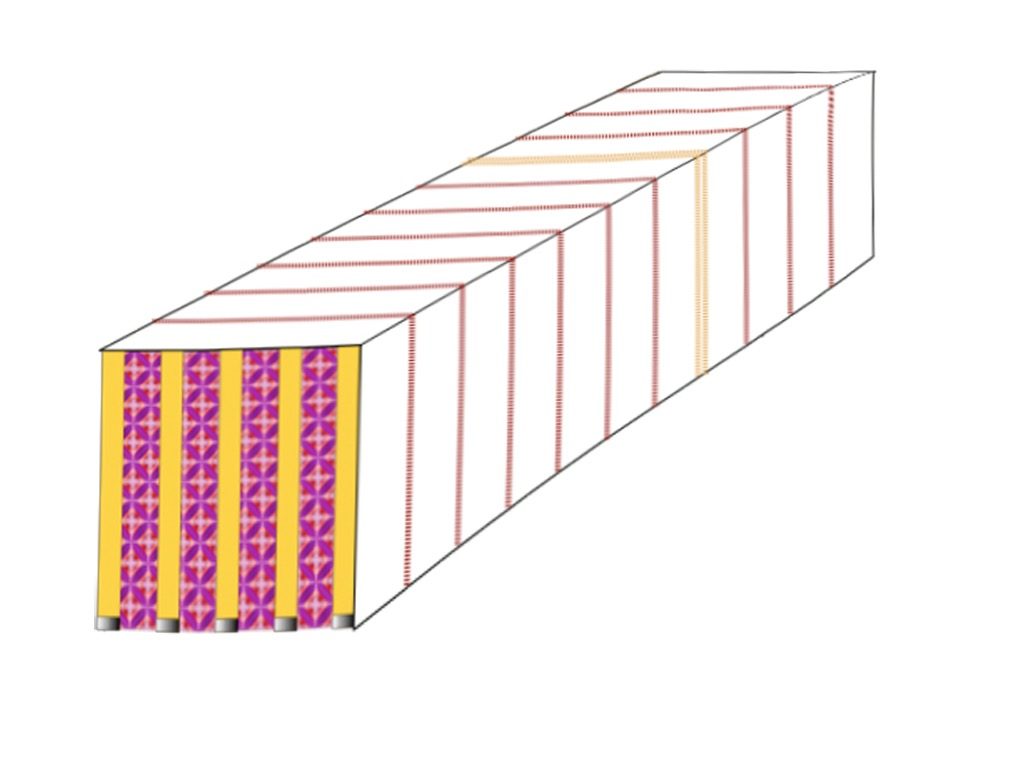
Sobre la primera cubierta de la carpa había una cubierta un poco más grande hecha de pelo de cabra. – Figura 10
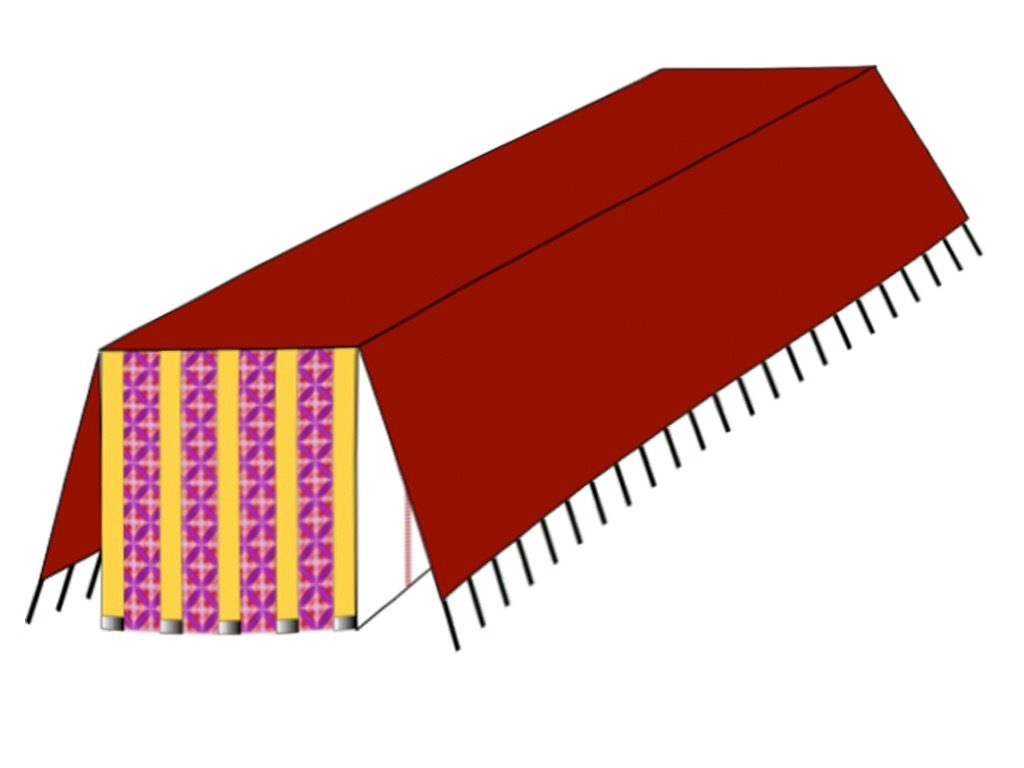
La tercera cubierta era de piel de carnero teñidas de rojo. Fue el primero de los dos revestimientos a prueba de agua. – Figura 11

La última cubierta fue hecha de piel de tejón a prueba de agua. – Figura 12
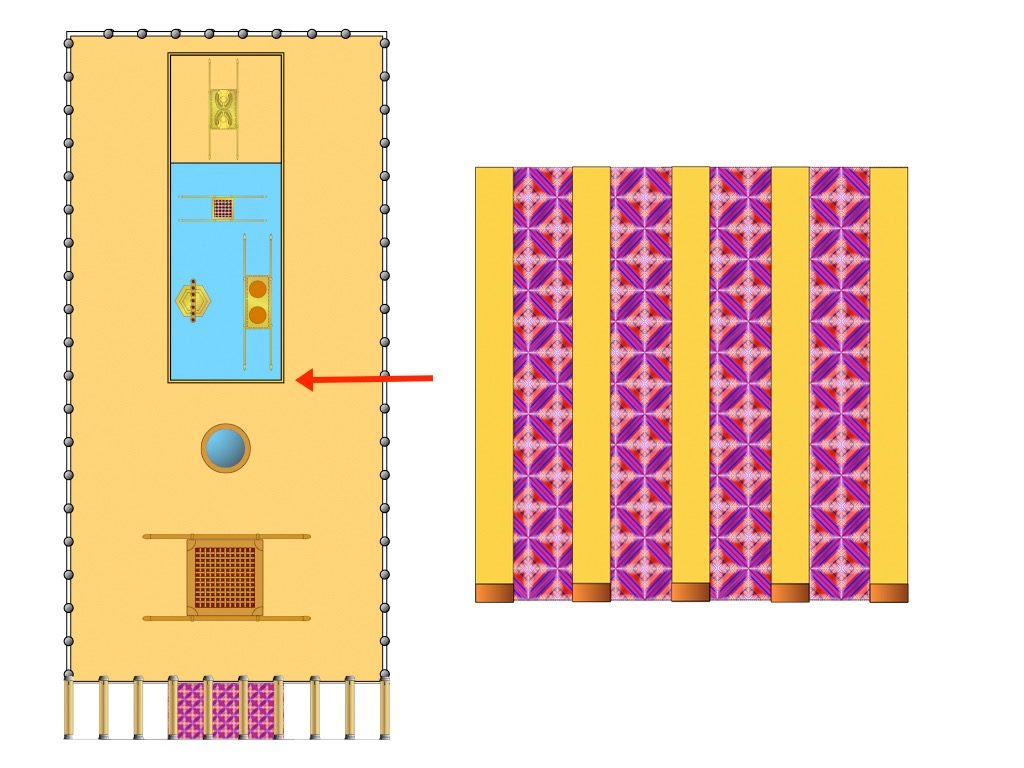
Había dos secciones en la tienda del tabernáculo. El primero fue el lugar santo. La entrada era a través de una cortina detrás de cinco pilares de oro. – Figura 13

Detrás del Lugar Santo estaba el Lugar Santísimo. La entrada a este lugar más sagrado era a través de una cortina conocida como el velo. Este velo estaba hecho de lino fino e hilo azul, púrpura y escarlata con figuras de ángeles bordadas en él. – Figura 14
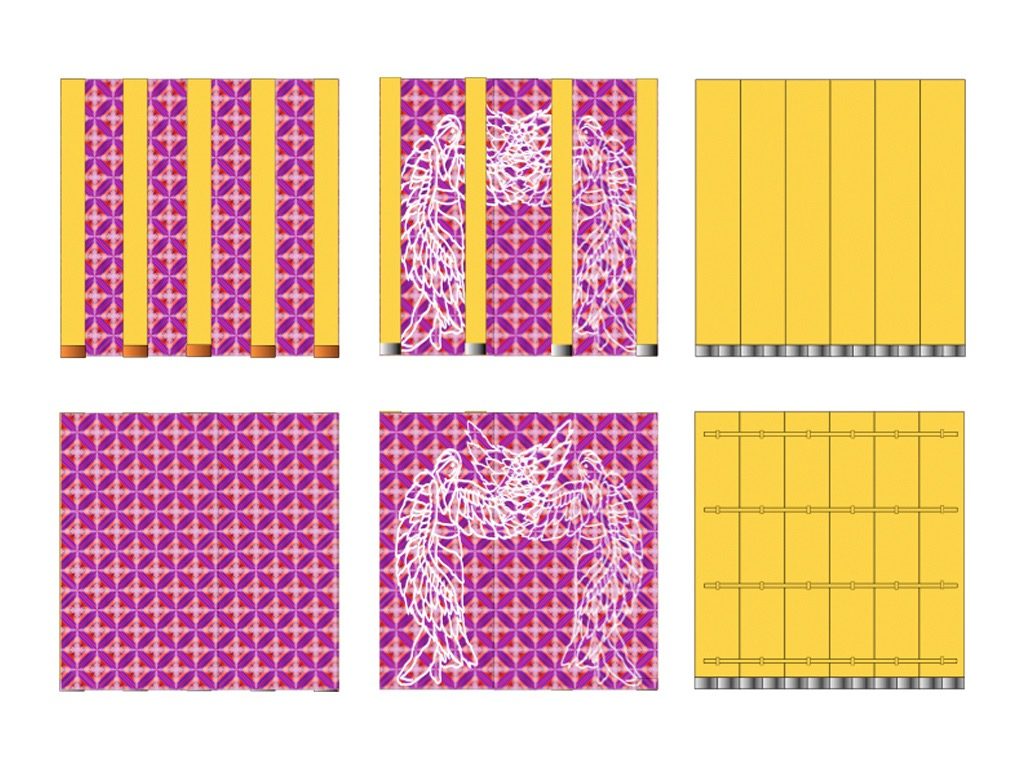
Bajo estas cuatro cubiertas y apoyando estas cortinas, las paredes del tabernáculo estaban hechas de tablas de madera de acacia revestidas de oro. – Figura 15
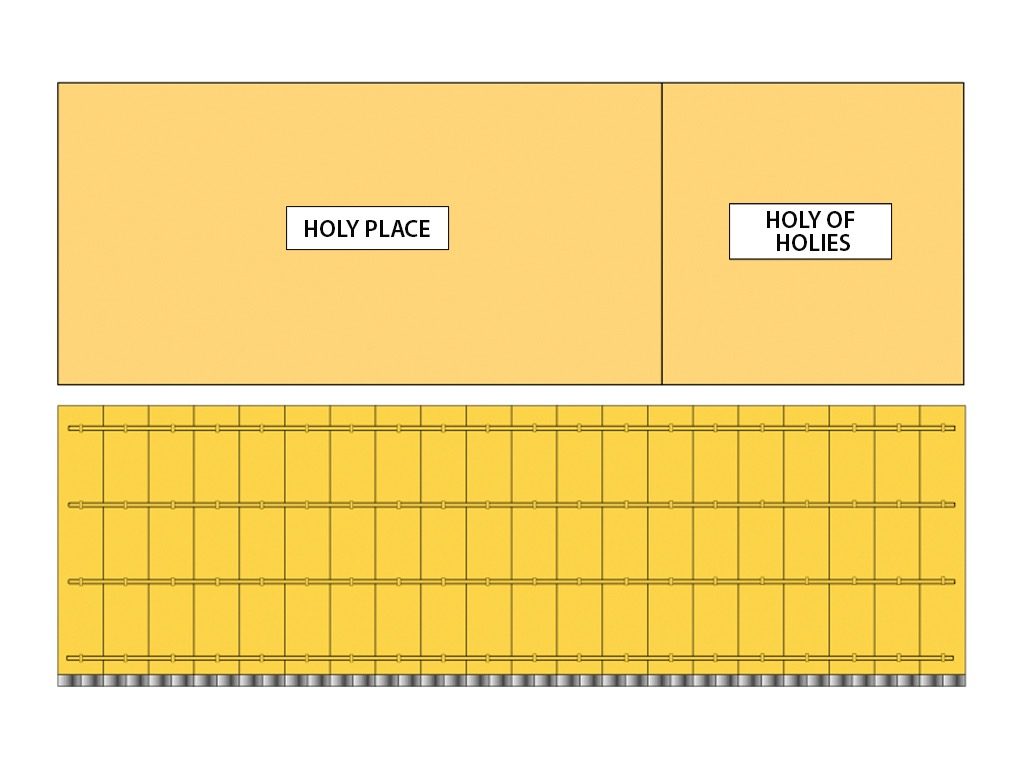
El Lugar Santo mide 30 pies (9 m) x 15 pies (4,5 m). Separado por un velo en la parte trasera del Lugar Santo fue el más sagrado Lugar Santísimo. Esta habitación era un cubo perfecto: su longitud, ancho y altura eran igual a 15 pies (4,5 m). – Figura 16

Cada tablero que conforma el Lugar Santo y el Lugar Santísimo tenía 17 pies (5.2 m) de altura y 2.5 pies (0.76 m) de ancho. Estas tablas se colocaron en 100 tomas de plata hundidas en el suelo. Las barras horizontales de madera cubiertas de oro se pasaron a través de anillos de oro en las tablas para mantener la estructura unida. – Figura 17

La menorá, o “candelero de oro”, estaba en el lado izquierdo del Lugar Santo. Fue martillado de una pieza de oro puro. El candelero tenía siete ramas, cada una diseñada como un almendro, que contenía capullos, flores y flores. Sobre las ramas había siete lámparas que contenían aceite de oliva y mechas. Los sacerdotes fueron instruidos para mantener las lámparas encendidas continuamente. – Figura 18
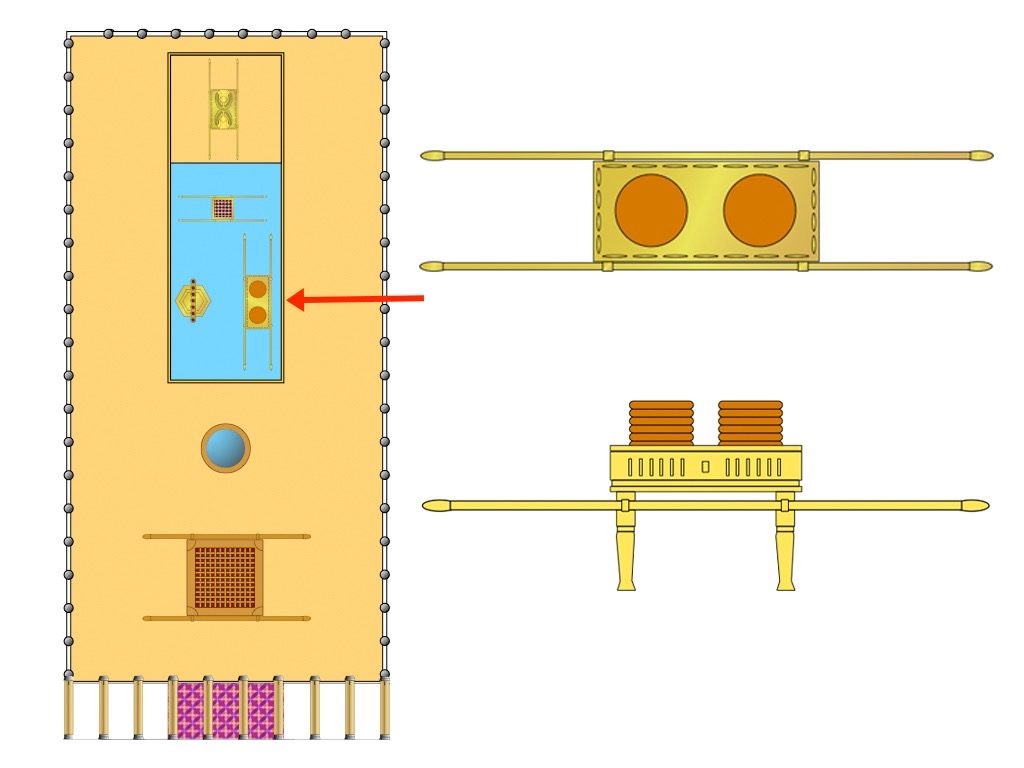
La mesa donde se ponían los panes llamada “showbread” era una mesa pequeña hecha de madera de acacia, recubierta de oro puro. Se encontraba en el lado derecho del Lugar Santo, frente al candelero y contenía 12 panes, representando a las 12 tribus de Israel. – Figura 19
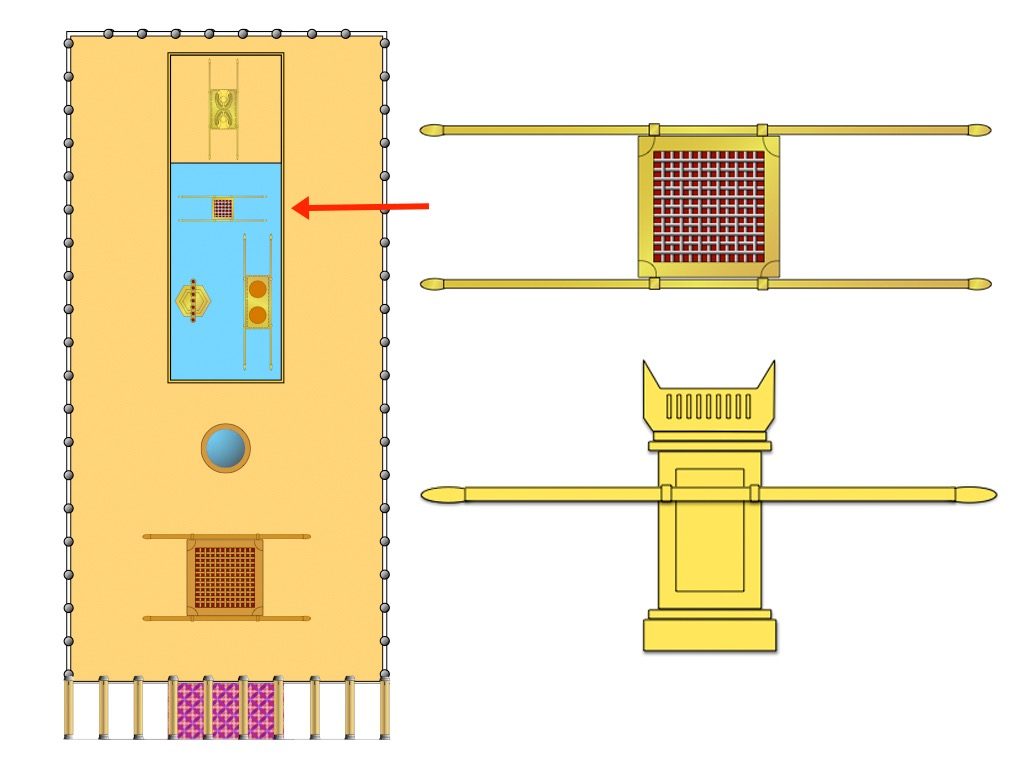
El altar de oro del incienso estaba hecho de madera de acacia y recubierto de oro puro. Cuatro cuernos sobresalían de las cuatro esquinas del altar. Dios ordenó a los sacerdotes quemar incienso en el altar de oro cada mañana y tarde. El incienso debía dejarse ardiendo continuamente durante el día y la noche como un agradable aroma para el Señor. El incienso estaba hecho de una parte igual de cuatro especias preciosas: stacte, onycha, gálbano e incienso. – Figura 20

Los sacerdotes llevaban prendas de lino blanco unidas con una faja o faja hecha de lino fino tejido e hilo azul, púrpura y escarlata (igual que el velo). El sumo sacerdote llevaba el efod, el peto, la bata y el turbante sobre la ropa interior de lino blanco. – Figura 21

Los sacerdotes podían entrar al Lugar Santo para cumplir con sus deberes, pero solo el Sumo Sacerdote podía entrar al Lugar Santísimo una vez al año en el Día de la expiación. – Figura 22
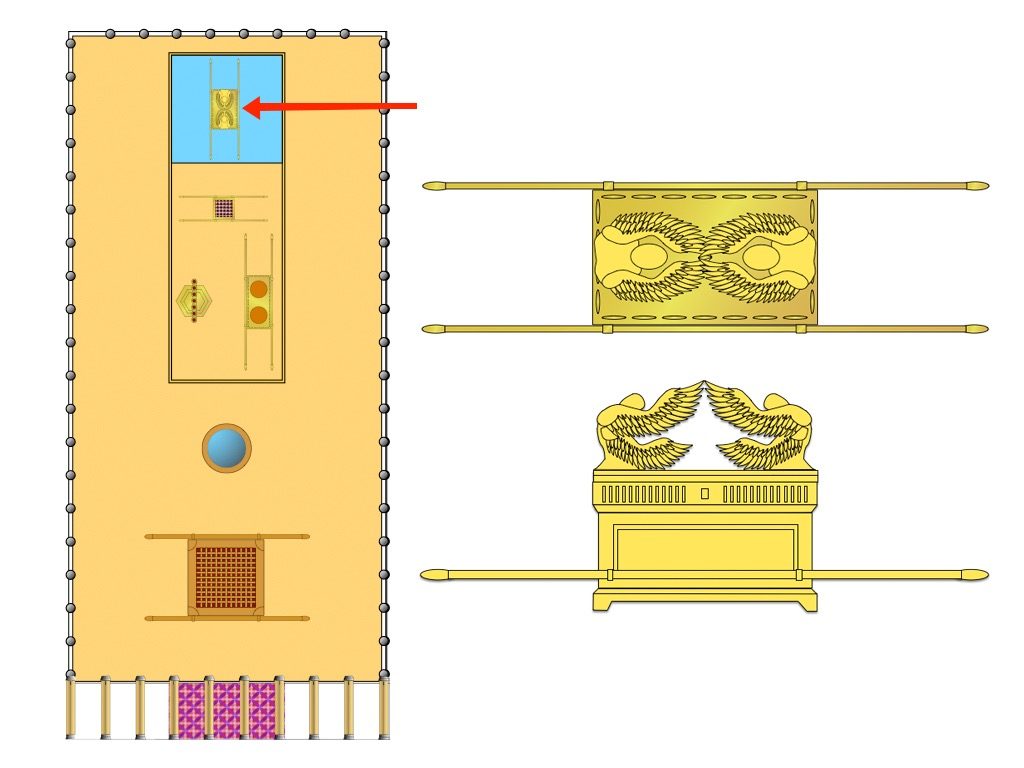
El Lugar Santísimo tenía un mueble, el Arca de la Alianza. – Figura 23
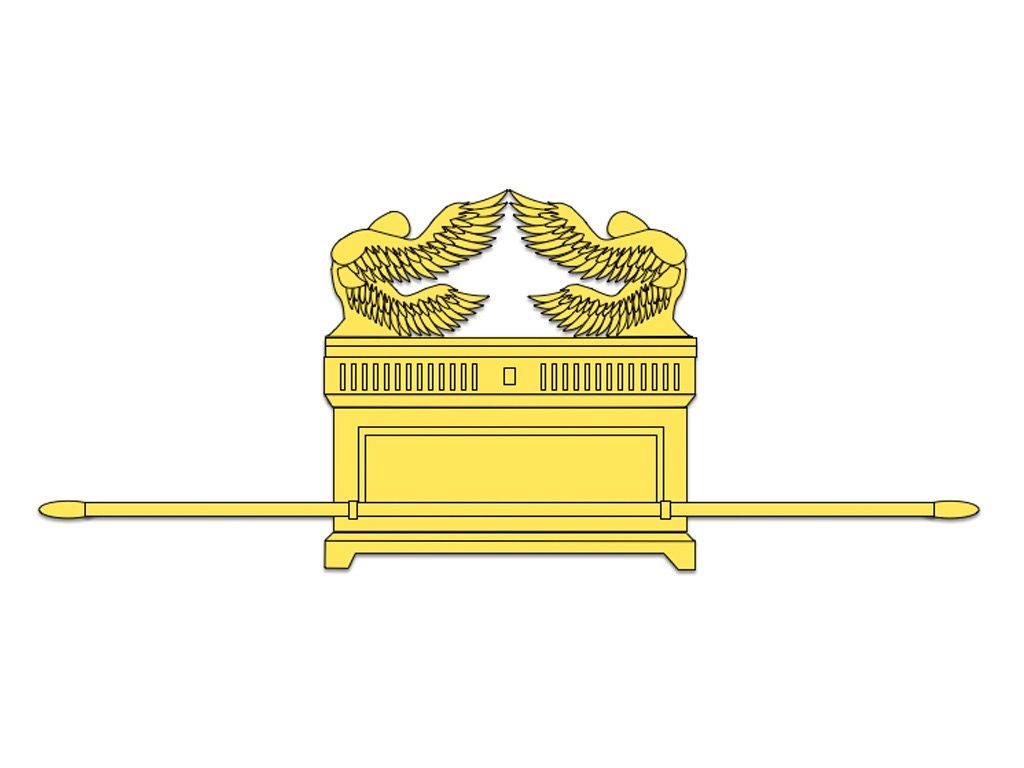
El Arca de la Alianza tenía una cubierta de expiación (o “asiento de la misericordia”) encima de ella. Estaba hecha de madera de acacia, cubierta con oro puro por dentro y por fuera. En la parte superior de la cubierta había dos querubines (ángeles) en los dos extremos, uno frente al otro. Sus alas extendidas cubrían la cubierta de la expiación. – Figura 24

Dentro del Arca de la Alianza había tres objetos, una olla de maná, el bastón de Aarón que había brotado y las piedras con los diez mandamientos. – Figura 25
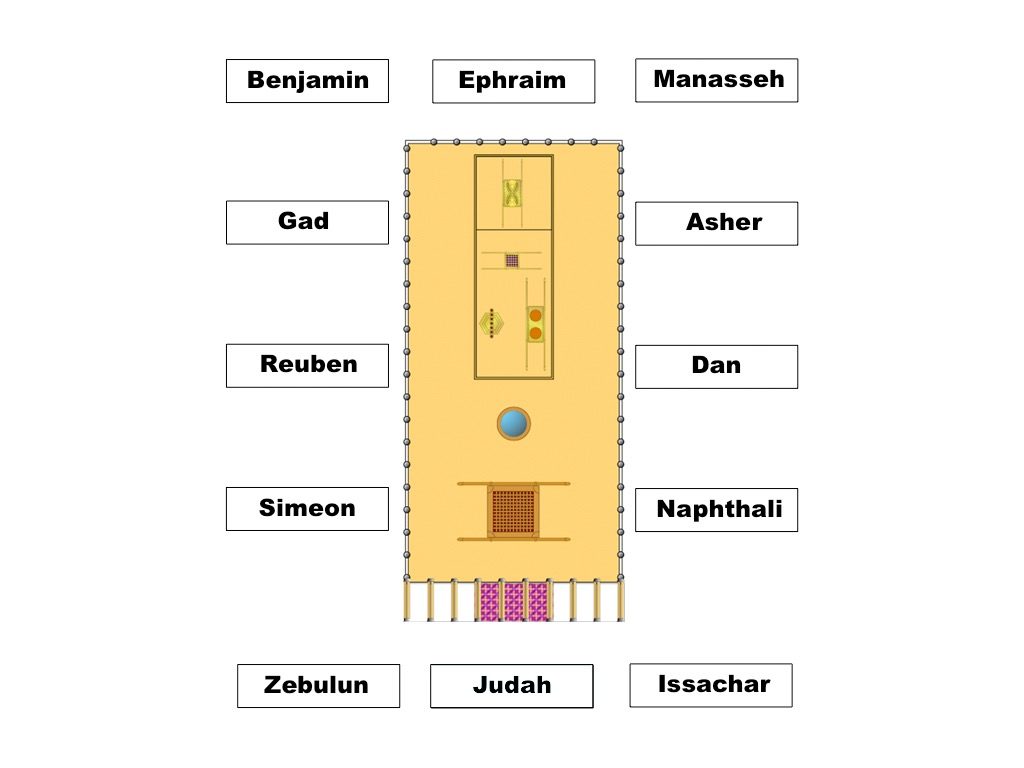
Los israelitas acamparon alrededor del tabernáculo en sus 12 tribus. – Figura 26
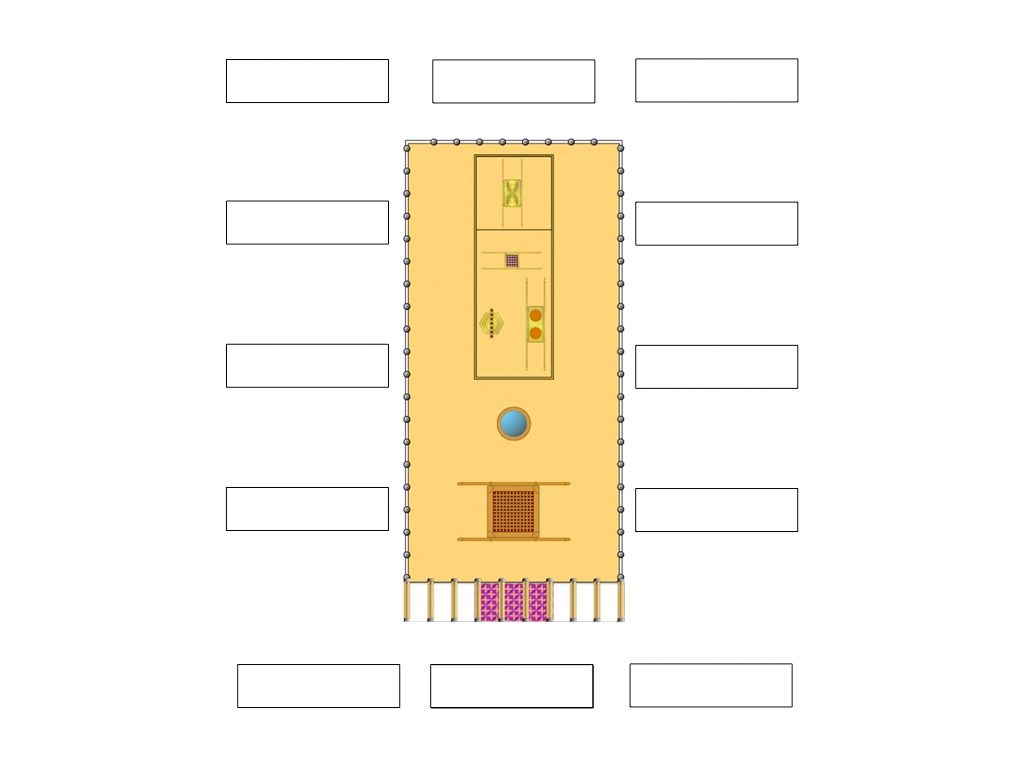
Esta imágen puede usarse para ingresar el nombre de las tribus en otros idiomas. – Figura 27
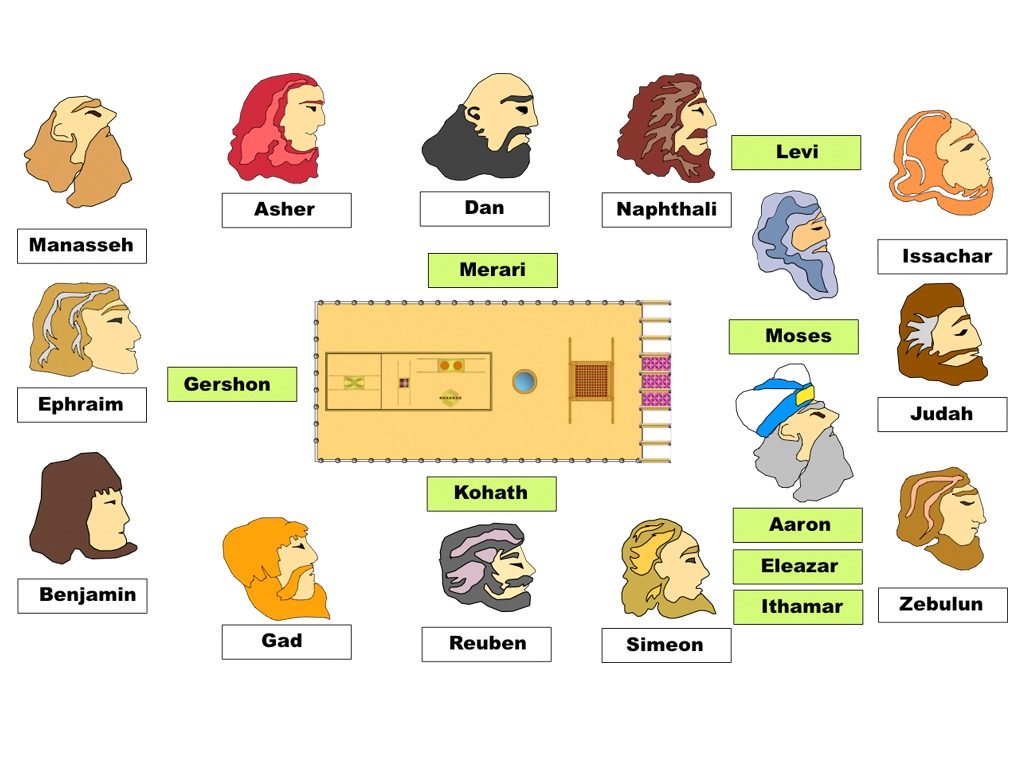
Dentro de este anillo de tribus, Moisés y Aarón y sus hijos tenían sus tiendas frente a la entrada del Tabernáculo. Los tres grupos familiares de los levitas Merrari, Gershon y Kohath tenían sus tiendas en los otros tres lados. – Figura 28

Esta imágen puede usarse para ingresar el nombre de las tribus en otros idiomas. – Figura 29
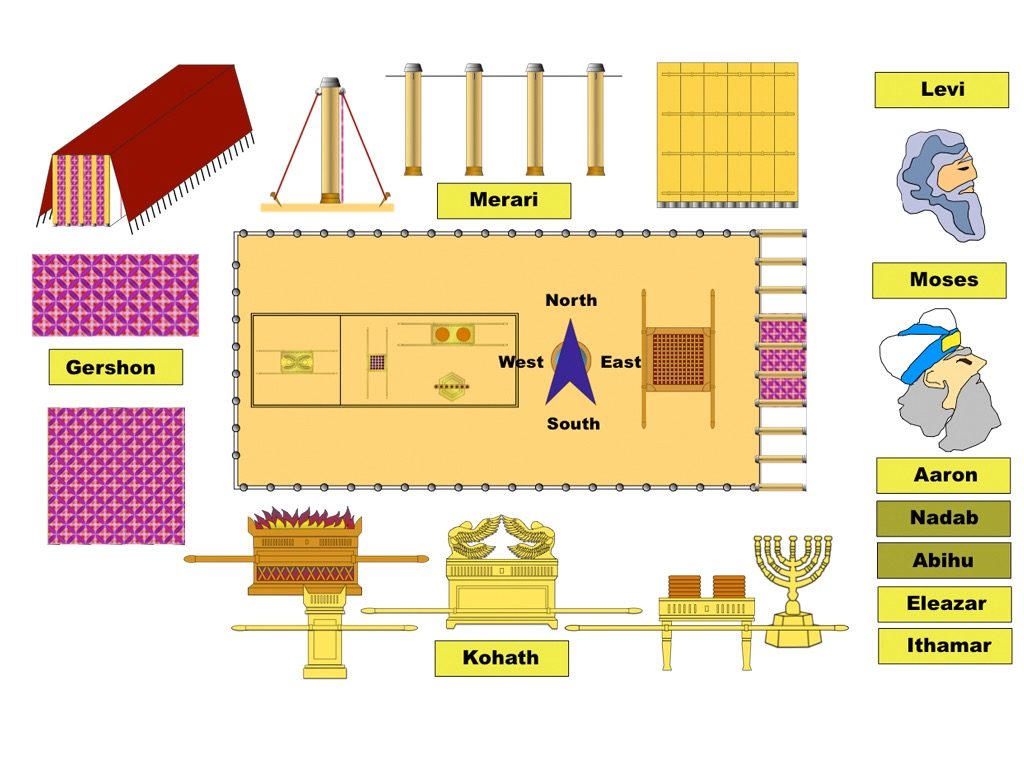
Estas imágenes muestran qué ramas de la familia levita fueron responsables de empacar el tabernáculo y sus muebles, luego cargarlo y volver a armarlo mientras los israelitas viajaban. – Figura 30

Esta imágen puede usarse para ingresar el nombre de las familias levitas en otros idiomas. – Figura 31

0 Comments